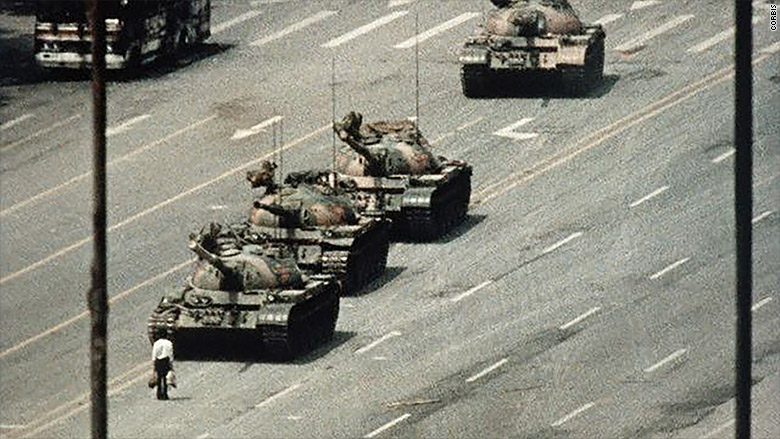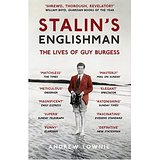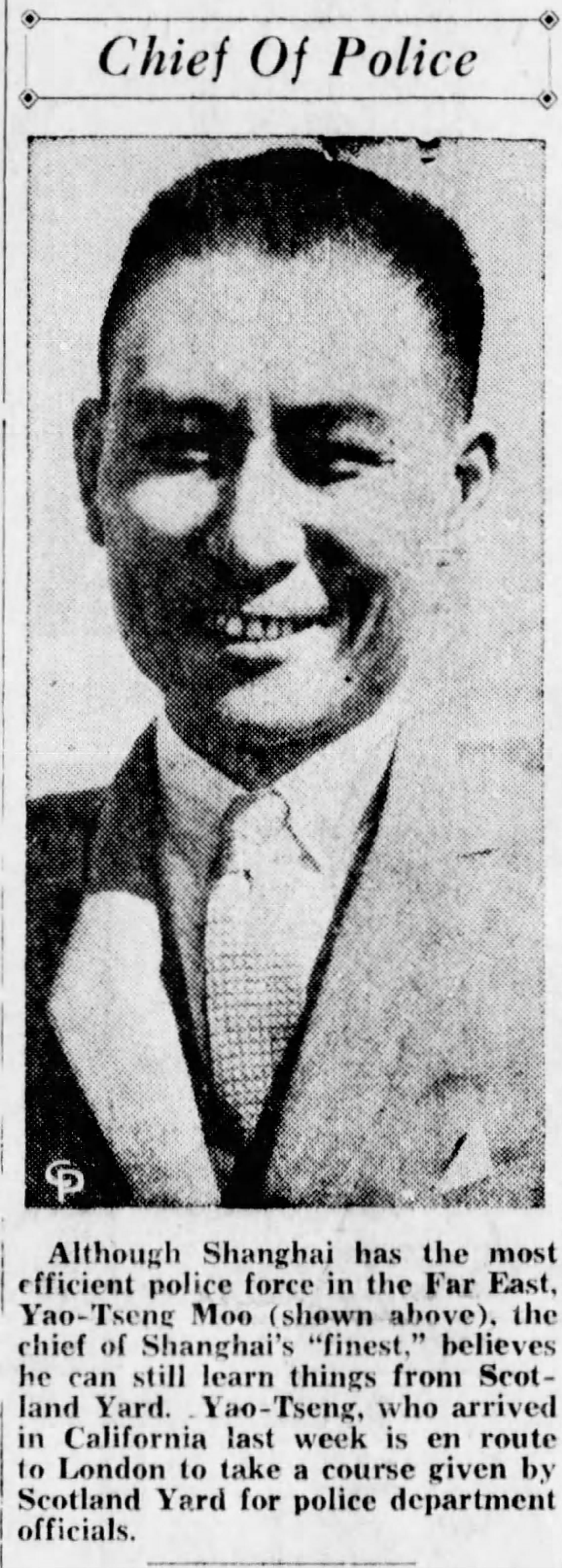Posted: June 6th, 2016 | No Comments »
Walter Shapiro’s Hustling Hitler is an extraordinary story, with a Shanghai connection….

From acclaimed journalist Walter Shapiro, the true life story of how his great-uncle—a Jewish vaudeville impresario and exuberant con man—managed to cheat Hitler’s agents in the run-up to WWII.
Vaudeville manager, boxing promoter, stock swindler, card shark and self-proclaimed “Jade King of China,” Freeman Bernstein was a master of exuberant excess and no stranger to the hard-hand of the law. But the charges he was arrested for on the evening of February 18, 1937, outside of a Hollywood starlet’s home, were more serious than those he had ever encountered before. The most powerful and feared man in the world–Adolf Hitler–claimed that Bernstein had committed fraud against the German government. While living in Shanghai in 1936, Bernstein had been asked to procure a large quantity of nickel for the Germans. Nickel was essential to make stainless steel for armaments, and impossible at that time for Germany to openly buy on the international markets. When the shipments arrived from Canada, bearing Bernstein’s stamp of approval, the Germans found only huge, useless quantities of scrap metal and tin: a huge blow to their economy and war preparations.
All his life, journalist Walter Shapiro assumed that the outlandish stories about his great uncle Freeman were exaggerated pieces of family lore; a cockamamie Jewish revenge fantasy dreamt up to entertain the kids and venerate their larger-than-life relative. But in recent years, Shapiro decided to search for the truth, and in this fascinating exploration of Bernstein’s life, he investigates the incredible possibility that a New York Jew–born to in 1874 to Polish immigrants–may have been responsible for a critical shortage of Nazi resources in the early years of World War II.
Shapiro’s easy narrative naturally evokes Bernstein’s colorful world: from the smell of the grease paint backstage in a seedy turn-of-the-century vaudeville house in Bayonne, to the roar from the ringside seats of a top-rated 1923 middleweight bout in Mexico City, and the ominous sense of what it must have been like for an American Jew to be arranging shady business dealings in Germany in 1936. A thrilling and page-turning read, Hustling Hitler is the untold story of the larger-than-life, eternal hustler who changed the course of history.
Posted: June 5th, 2016 | 1 Comment »
In June 1946 Marion Buchanan, 29, of Springfield, Missouri married Wang Tsung-lo, 26, of Shanghai, at the Baptist Church in Columbus, Ohio. The service was conducted by the Reverend Otis Beatty. It was reportedly a “simple ceremony”. The brides parents attended and Marion’s brother Robert was Wang’s best man. Wang was a language Professor at Yale; Marion a school teacher. The couple had met in Phoenix, Arizona where Marion was working as a high school teacher and Wang was an interpreter working for the army.
They had planned to marry in Missouri and had applied for a marriage license and made arrangements. However, the marriage was forbidden under a 111-year old law in Missouri making it illegal for a white woman to marry a “Mongolian”! So they drove to Kansas and got married in Columbus.
I’m afraid I have no idea how the marriage turned out – hopefully all went well…

Posted: June 4th, 2016 | 1 Comment »
Obviously it’s an anniversary in China….and we always post old photographs to commemorate such anniversaries…

Posted: June 4th, 2016 | No Comments »
I noted Poo-Too Island in the 1930s yesterday. There is a slightly earlier guide to the island (Putuo now) - by Robert Ferris Fitch (1873-1954), being a guide to the chief places of interest. It was published by the great Shanghai house of Kelly and Walsh in 1929. “The charming island of Pootoo. In that peaceful and secluded spot, monastic Buddhism as practiced in China is to be seen at its best and fairest.” Fitch, for the record, was the son of Presbyterian missionaries in China who himself became a missionary. He was president of the Hangchow Christian College from 1922 to 1931 and spent most of his career in Hangchow (Hangzhou).

Posted: June 3rd, 2016 | 2 Comments »
Talking of Vanya Oakes yesterday it reminded me that she has a good description of Shanghai’s Putuo Island in her 1943 book White Man’s Folly. If you don’t know Putuo Island here’s a link. When Oakes spent time there, around 1934 or thereabouts, it was somewhat more remote and basic than today’s rather tourist infested isle. It was also known as Poo-Too back then…
‘Poo-Too is at the mouth of the Whangpoo, less than a hundred miles from Shanghai. Of distance there may be some measure in Poo-Too, but of time there is none…On Poo-Too there was neither telephone nor electric light nor automobiles; its only contact with the modern world was a tourist trade in the summer, with little steamers arriving at intervals with week-enders like myself…When I was there, there were some hundred temples, monastries and pagodas, and more than two thousand monks and novices.’
She goes on to give a good description of the island, the temples, lotus ponds, traditional bridges and statues of Kuan Yin. Should you happen to be visiting then you might care to read her entire description (several pages) and compare and contrast with 2016!

Posted: June 2nd, 2016 | 1 Comment »
In 1933 American Vanya Oakes decided working in the San Francisco Public Library was not for her and, depressed by the Depression, went to Shanghai. She had a vague idea about being a teacher. She decided she could either teach English to wealthy Shanghainese or open a theatre school. She thought she could perhaps become a great female theatre director in China. She did open a small acting school – not quite on the scale of the Moscow Art Theatre or the Comedie Francaise she’d envisioned – but popular all the same. By her own admission the theatre school was an ‘inglorious flop’. She did stage some rather amateurish productions and went on to try and write a China-themed ballet but soon closed the school in favour of a job as a journalist on the China Press newspaper. However, Vanya Oakes’s school did produce one success – Lotus Liu.
Lotus Liu did manage to attract the eye of Hollywood and, aged just 20, pitched up in Hollywood in 1936, ‘straight from Shanghai’ as the newspapers had it, to get a role in the movie version of Pearl Buck’s The Good Earth. Lotus – born in 1916 or 1917 and “Eurasian” as they used to say – i.e. mixed race – was born in Shanghai. It was reported that her father had been a member of the Chinese diplomatic corps who married an Englishwoman he met at the University of California.

Lotus was signed up by Metro Goldwyn Mayer. The story goes that George Hill, the director of The Good Earth, spotted her on a bus in Shanghai. More likely he was introduced to her by Vanya Oakes at her theatre school while he was scouting talent in the city. Lotus claimed she actually wanted to be a dancer but came to Hollywood anyway, accompanied by her English mother and her brother who enrolled at the University of Southern California. At the time, and no doubt with some influence from MGM’s publicity department, Lotus was touted as the new Anna May Wong. The American newspapers liked her and marvelled at her clipped English accent (and claimed she’d been educated in English finishing schools). She may also have acquired a bit of English snobbishness too – asked her opinions of America she replied:
‘Your men suffer from a lack of lack of poise, charm and indirectness (NB: indirectness being a much prized English traits of course). They are much more brusque and abrupt than we are used to in the Orient. Directness may be a virtue in business, but not in social amenities.’
Lotus went on to a fairly good Hollywood career, mostly in Chinese-themed movies such as Oil for the Lamps of China, the Gary Cooper feature The Adventures of Marco Polo and North of Shanghai. She also did various theatre work (thanks to Vanya’s training again!) including in a Los Angeles production of Lady Precious Stream, alongside actors predictably in yellowface. The press though never quite knew how to handle her – commenting that she looked Chinese on screen and Russian off screen! I’m afraid I don’t know what happened to her eventually?

Posted: June 1st, 2016 | No Comments »
For anyone interested in early PRC/UK relations Andrew Lownie’s Stalin’s Englishman: The Lives of Guy Burgess is an interesting read. It does shed some potential light on London’s hasty recognition of the PRC and abandonment of Taiwan. I don’t have time to go into it in a mass of detail here, but refer you to Lownie’s excellent biography of Guy Burgess, the traitor.
Briefly though, in April 1948 Burgess (long already a Soviet spy) was posted to the Foreign Office’s Far East Department, covering China and the Philippines. All but one of his colleagues were old Etonians! There were a number of old China Hands in the department, including Patrick Coates (who is still in publication for his memoirs of Hong Kong) and had been with the Chinese Nationalist Army for some time in the War. Burgess’s job was to deal with correspondence from British officials in China. Burgess was interested in China, though no specialist. In the 1930s he had written reviews of several books on Japan and Manchuria for the New Statesman. He saw the Chinese “revolution” as ‘socialist in content, national in form.’
According to Lownie, Burgess was influential on China up into the highest circles of Whitehall – he also passed literally suitcases of documents on British thinking and policy on China/Taiwan to Moscow. Burgess was also, it seems, somewhat influential in arguing for Britain to swiftly recognise the new PRC, where America was hesitant, and shamefully drop the ROC/Taiwan. Lownie’s book also has some interesting information on factional struggles within the CCP and then the onset of the Korean War.
There’s one tale in Stalin’s Englishman that needs a bit more info though – and maybe a China Rhyming reader has it? The defector Anatoly Golitsyn claimed that in 1953/54 Burgess, a well known homosexual, was sent to Peking to compromise in a homosexual blackmail operation a former friend of his stationed in the British mission in the city. Who was that? and did it ever happen?

Posted: May 31st, 2016 | 2 Comments »
Here’s Shanghai Municipal Police Assistant Commissioner Yao Tseng-moo (the papers rather screwed up his name) passing through California on his way to London for a Scotland Yard training course. Clearly he took the long way – across the US by train and then another boat to England (a bit of sightseeing, though to be fair, it was half the price of the more direct route via Suez and so saved the ratepayers a few dollars). He also stayed in a few American cities, including Detroit and Chicago, to get a look at American policing methods. Yao had done pretty well, rising up through the ranks from being a mere clerical assistant in 1918 and was one of the first Chinese to gain Assistant Commissioner rank (I think).









